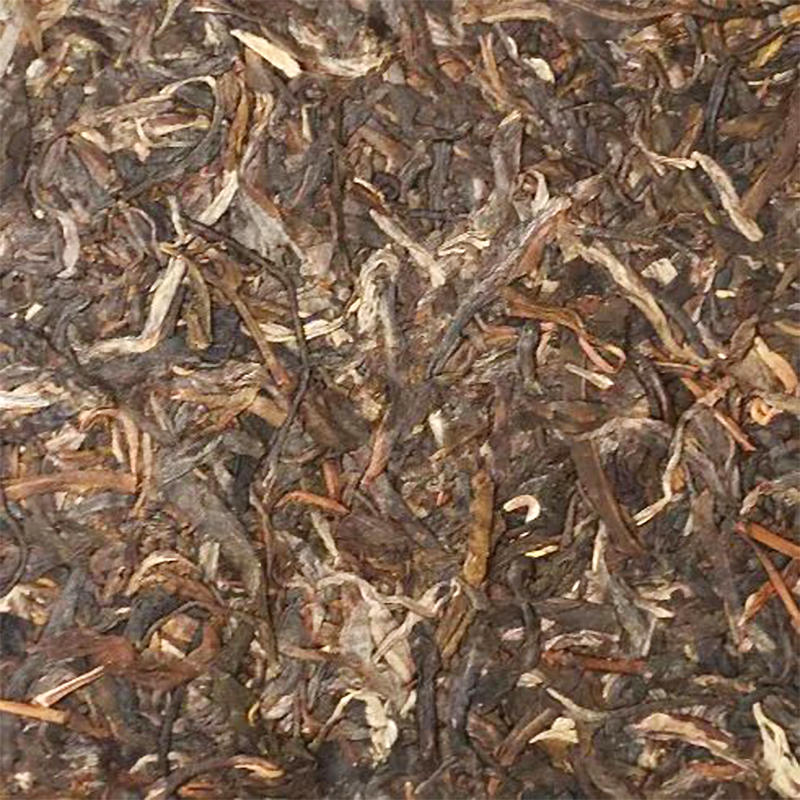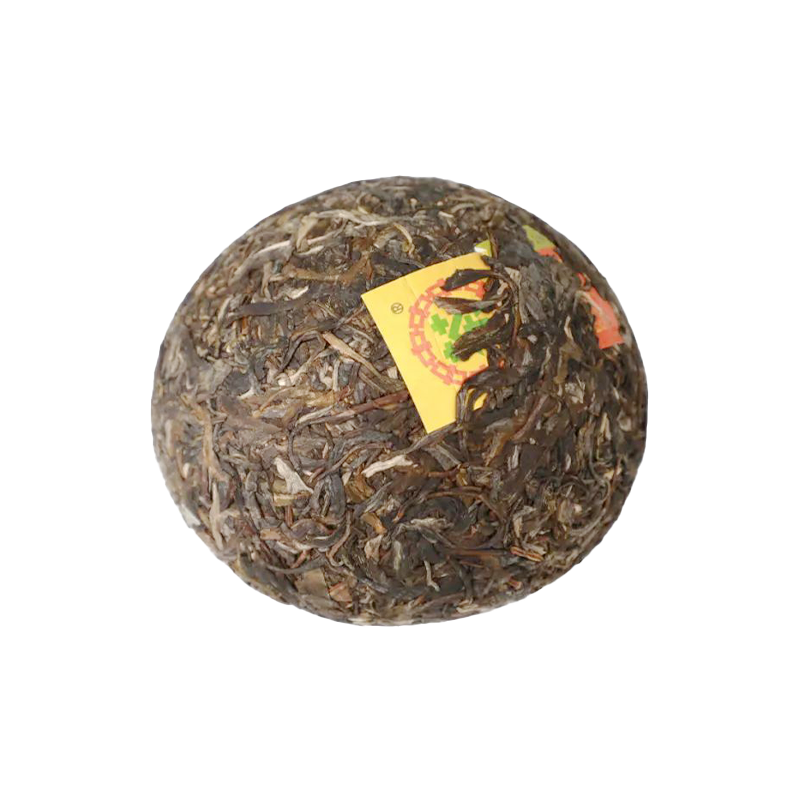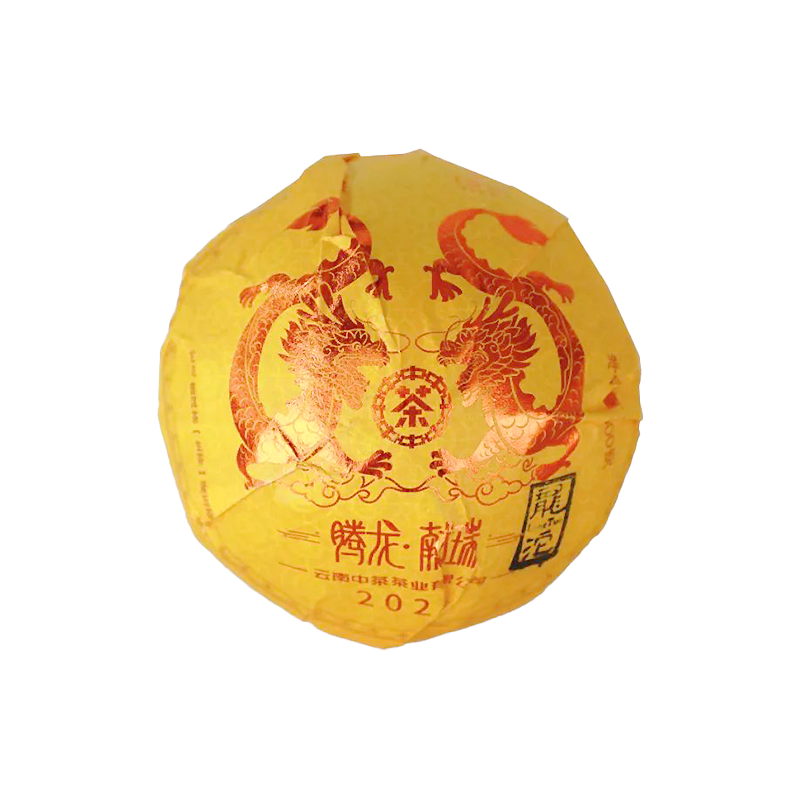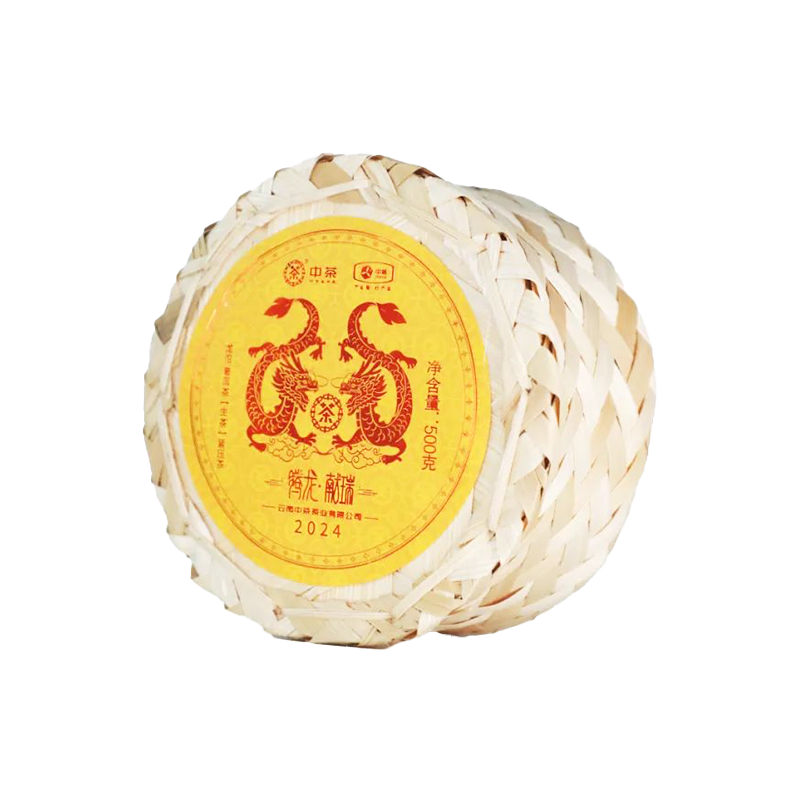ChinaTea.net | 中茶官方网店
Zodiac Dragon Raw Pu Erh Tea TuoCha
Zodiac Dragon Raw Pu Erh Tea TuoCha
Couldn't load pickup availability
Chinese zodiac culture is an integral part of traditional Chinese culture, deeply rooted in the lunar calendar and astrological beliefs. The year 2024 marks the Year of the Dragon, and this premium Pu Erh tea is a special commemorative edition released in honor of this occasion. The dragon is unique because it is the only mythical creature among all the animals in the Chinese zodiac. In Chinese culture, the Dragon symbolizes imperial power, good fortune, good luck, and protection.
Tuocha, also known as "dome-shaped bowl tea," is a compressed tea with a shape resembling a bird’s nest and varying in weight from 3g to 3kg or more. Its convex shape aids in the drying process post-production. Selected from premium tea leaves cultivated in the Lancang River Basin, it yields a brew with a golden color.
The infusion of this tuocha reveals a myriad of characteristic flavors that develop over the years of aging. In the first infusion, there's a prominent taste of young wood accompanied by a subtle hint of cellar humidity, a result of the aging process. As the flavor profile unfolds, notes of smoky incense emerge, followed by a delicate sweetness that intensifies and lingers in the aftertaste. Subsequent infusions carry a fruity undertone reminiscent of black cherries, adding depth to the overall experience.










Features
Type: Raw Pu'er Tea
Origin: Lancang River Basin, Yunnan Province, China
Weight: 500g/cake ( 70-110 servings per cake)
Leaves can be re-infused: 5 - 10 times
Caffeine: Medium-Low

Flavor
In the first infusion, there's a prominent taste of young wood accompanied by a subtle hint of cellar humidity, a result of the aging process.
As the flavor profile unfolds, notes of smoky incense emerge, followed by a delicate sweetness that intensifies and lingers in the aftertaste.
Subsequent infusions carry a fruity undertone reminiscent of black cherries, adding depth to the overall experience.
Steeping Instructions
-

Water
110ml/3.7 fl.oz
-

Temperature
100°C/212℉
-

Leaves
7-9g/ 1-1.5 tsp/ 0.25-0.3 oz
-

Time
First 3-5 infusions: 5-10 seconds
Subsequent infusions: 10-15 seconds
Note: This guide is based on the standard 110ml Gaiwan (lidded tea cup) as a reference. The suggested tea-to-water ratio is 1:15, though adjustments can be made to suit personal preferences.
FAQ

What is Chi Tse Beeng Cha?
Pu'er tea is often compressed into various shapes, with one of the most common being the Beeng Cha (compressed tea cake). Beeng Cha typically takes the form of a round, flat disc or puck, ranging in size from as small as 100 grams to as large as 5 kilograms or more. Standard weights include 357 grams, 400 grams, and 500 grams. It is commonly referred to as Chi Tsu Ping Cha, which translates to "seven units cake tea," as seven of these tea cakes are typically packaged together for sale or transport.
Sheng (Raw) Pu'er v.s. Shu (Ripe) Pu'er
Raw Pu'er tea (sheng pu'er) is a type of tea that undergoes non-fermentation during its production process. This preserves the original characteristics and aroma of the tea leaves. Young raw Pu'erh shares similar characteristics to green tea. As the tea ages, it becomes more complex and is renowned for its stronger mouthfeel and long-lasting aftertaste.
Ripe Pu'er tea (shu pu'er), also known as cooked Pu'er, is a type of tea that undergoes wodui (wet piling), which involves piling, dampening, and turning the tea leaves in a manner similar to composting. This fermentation process gives the tea a rich, mellow flavor, and a smooth mouthfeel.
What are Pu'er tea and its health benefits?
Pu-erh is originating from China's Yunnan province, dating back to the Han Dynasty. It's crafted from the fresh leaves of a superior "large leaf" variety of Camellia Sinensis. It possesses a distinctive matured fragrance and a sweet, smooth aftertaste that improves over time. Pu-erh tea, akin to fine wine, gains value and refinement with aging.
Pu-erh's popularity surged due to its numerous health benefits. Ripe Pu-erh, being a fermented tea, aids digestion and is abundant in polyphenols, aiding in detoxification and combating free radicals. Moreover, Pu-erh promotes heart health as it contains statins that reduce cholesterol levels. Its diverse bacteria composition supports gut health, while also safeguarding the nervous system and enhancing brain function. For optimal weight loss benefits, it's recommended to consume Pu-erh tea one hour after a meal to help eliminate excess grease and aid in the digestion of hard-to-digest fats.
How to break a pu'er tea cake properly?
- Prepare a cha pan (tea tray) and a cha zhen (tea pick). Using a chaban is ideal to catch any loose tea pieces.
- Unwrap the tea cake and position it face down, with the smooth side facing down, typically where the paper was attached.
- Using a Pu-erh tea pick, gently make three holes in the cake, aiming for spots with softer resistance. Be cautious not to apply too much pressure or accidentally prick yourself.
- Once the needle is inserted, delicately wiggle it to loosen the tea at each hole until you can easily separate a small piece.
- Transfer the loosened tea into a cha he (tea box), readying it for brewing. The tea box should be sealed to maintain the freshness of the tea leaves.













